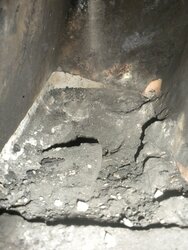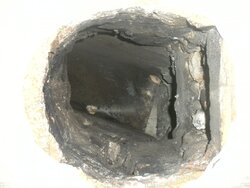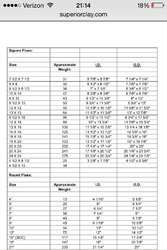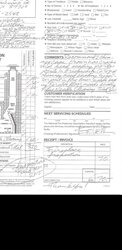Ok,
We moved into a new to us home two weeks ago. I want to install a wood stove for supplemental heat and this house has a dual flue in the masonry chimney, one larger flue for the top level fireplace, and a second 7" X 11" terra-cotta flue for the daylight basement wood stove hookup requiring a thimble through the cinder block wall where a hole has been cut out.
I already had a thread regarding lining the smaller flue with a Stainless Steel liner so I've got those question out of the way, but now I have a new question.
With installing a new liner you install a T clean out at the bottom of the flue correct?
My question / concern is the smaller flue in the basement does not have an open bottom for a clean out. The flue stops at the opening in the cinder block wall where the thimble goes....
I stuck my camera up into the clean out in the bottom of the chimney outside and looked up the chimney. The smaller flue has a cinder block bottom sealing it completely up...
Is this a problem? Do I need a T clean out to install the stainless liner? If so, do I need to have a hole cut out of the bottom of this flue to make room for the T clean out?
Here are some pictures of the hole for the thimble, and pictures of the bottom of the fireplace and cinder block bottom of the smaller flue.
Mike
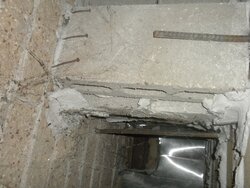
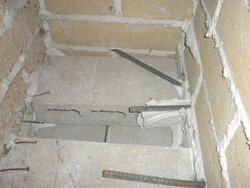
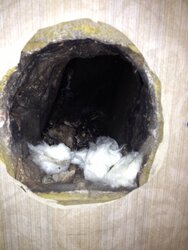
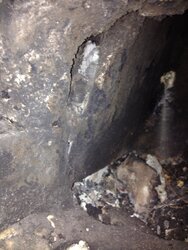
We moved into a new to us home two weeks ago. I want to install a wood stove for supplemental heat and this house has a dual flue in the masonry chimney, one larger flue for the top level fireplace, and a second 7" X 11" terra-cotta flue for the daylight basement wood stove hookup requiring a thimble through the cinder block wall where a hole has been cut out.
I already had a thread regarding lining the smaller flue with a Stainless Steel liner so I've got those question out of the way, but now I have a new question.
With installing a new liner you install a T clean out at the bottom of the flue correct?
My question / concern is the smaller flue in the basement does not have an open bottom for a clean out. The flue stops at the opening in the cinder block wall where the thimble goes....
I stuck my camera up into the clean out in the bottom of the chimney outside and looked up the chimney. The smaller flue has a cinder block bottom sealing it completely up...
Is this a problem? Do I need a T clean out to install the stainless liner? If so, do I need to have a hole cut out of the bottom of this flue to make room for the T clean out?
Here are some pictures of the hole for the thimble, and pictures of the bottom of the fireplace and cinder block bottom of the smaller flue.
Mike






